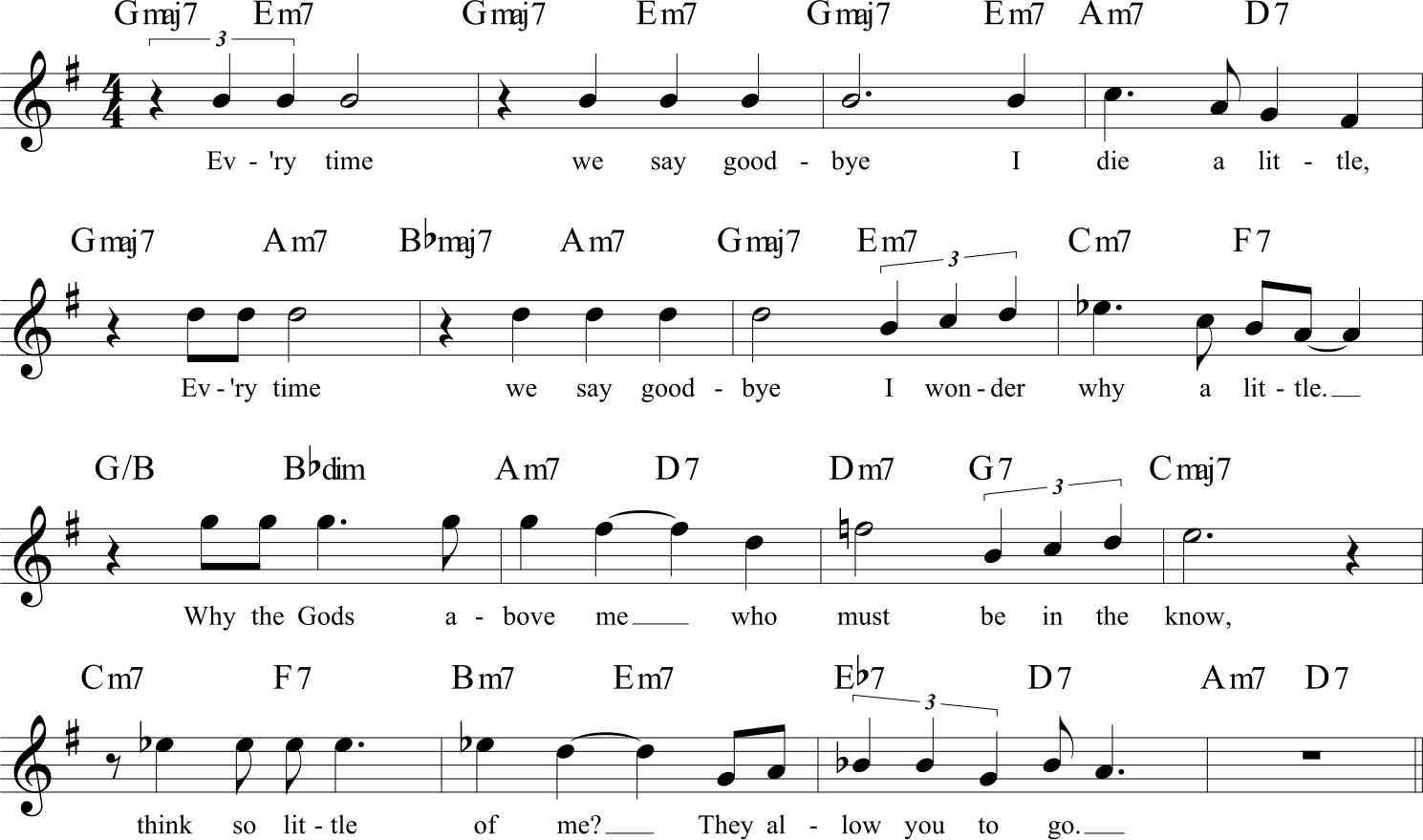[Monday Notes no. 121] Every Time We Say Goodbye is one of the most beautiful songs written by Cole Porter, a songwriter who contributed dozens of unforgettable songs to the repertoire of great American songs. While many composers worked in tandem with a lyricist, Cole Porter for Everytime We Say Goodbye wrote both the lyrics and the music, which are both very beautiful.
We can place Everytime We Say Goodbye in the category of ‘farewell songs’, although in this case the separation seems to be only momentary. The song recounts the melancholy of a parting, that feeling of tenderness that we experience at the precise moment when someone we love leaves us.
The melody of Everytime We Say Goodbye begins on the third of the tonic chord G, the note B, which is repeated eight times. The second phrase (measures 5-8) moves to D, the fifth of the chord, and the third phrase (measures 9-12) reaches the octave of the chord (note G).
The melody is thus apparently simple, in reality it also touches on notes outside the scale: E♭ at measure 8, F at measure 11, again E♭ at measures 13-14, B♭ at measure 15.

The harmony also alternates chords that belong to the scale with more unexpected ones. Among these, very effective and surprising is the B♭ chord at measure 5, which takes the place of the more predictable Bm7 within a diatonic movement I II III II I.
There are some conventional phrases in the lyrics of the song, such as ‘the spring air’ surrounding the beloved and ‘the lark singing somewhere’. The lyrics, on the other hand, offer a highly original cue when they say:
there’s no love finer, but how strange the change from major to minor
This is a rare, if not unique case of metanarration within the jazz repertoire. The singer reveals that he is inside a song, and comments on the transition from a major to a minor chord, which actually occurs between the chords Cmaj7 and Cm6. (minute 1’20”)

This recording dates from January 1945 and features pianist Teddy Wilson’s quintet with singer Maxine Sullivan, Red Norvo on vibraphone, Charlie Shavers on trumpet, Billy Taylor on bass and Morey Feld on drums.
Although the musical Seven Lively Arts from which Every Time We Say Goodbye is taken was not very successful, the song immediately attracted the attention of Teddy Wilson, who was among the first to record it.

Maxine Sullivan’s interpretation is very respectful of the original and allows us to appreciate the song in its early form. Among the more interesting variations, I would point out John Coltrane’s on the album My Favourite Things.
Until next Monday!


